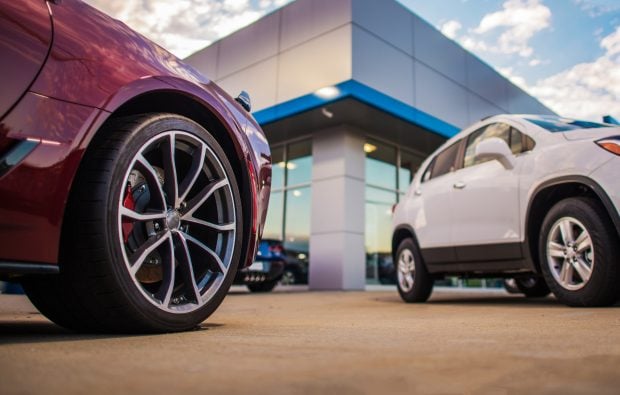 Credit/AdobeStock
Credit/AdobeStock
Credit unions' share of vehicle financing in the fourth quarter fell to its lowest level in more than two years, according to a report by Experian.
Experian's "State of the Automotive Finance Market" released Thursday showed credit unions originated 22.1% of the number of loans and leases for new and used vehicles in the fourth quarter — the lowest share since third quarter of 2021. It was also down from 26.9% a year earlier and 23.1% in the third quarter.
Recommended For You
Credit unions had record-high shares of auto financing in 2022, especially for new cars. Last year, those numbers returned to more typical levels as captive lenders reached 31.6% — their highest share since at least the first quarter of 2018.

In the new car market, credit unions' shares fell steeply in the first half of 2023, and by smaller amounts in the second half. Bank shares have been relatively flat, while captives' share soared above 60%.
Credit unions were responsible for 12.1% of new car loans and leases in the fourth quarter, down from 20.3% a year earlier, 13.2% in the third quarter and the lowest share since 2021's second quarter.
Credit unions' share has been more stable in the used car market, where they typically lead. Credit unions originated 29.6% of loans in the fourth quarter, maintaining their top spot ahead of banks (26.7%), finance companies (18.7%), buy-here-pay-here and others (15.5%), and captives (9.6%).

The NCUA doesn't report auto loan originations by itself, but the figures it does report indicated weak balance growth and a possible steep drop in originations last year.
For the Top 10 credit unions by assets, originations for the segment that includes autos, credit cards and personal loans were $20.3 billion in the fourth quarter, down 11% from a year earlier and down 7.4% from the third quarter. Their total loan production was $28.3 billion, down 12% from both a year earlier and from the third quarter. The NCUA will release data for all credit unions in early March.
For all lenders, Experian's report found loan amounts and loan-to-value ratios smaller than a year earlier, while payments rose with higher rates and shorter terms.
And delinquencies rose. At the end of 2023, 1.12% of auto loan balances were at least 60 days late, up from 0.99% a year earlier and 1.05% in September 2023. The 30-day delinquency rate was 3.00% in December, up from 2.73% a year earlier and 2.81% in September.
Experian found the average rate for a new car loan was 7.18% in the fourth quarter, up from 6.08% in 2022's fourth quarter and 3.92% in 2021's fourth quarter. The average interest rate for a used vehicle was 11.9% in the fourth quarter, up from 10.4% a year earlier.

Melinda Zabritski, Experian's head of automotive financial insights, said consumers responded to the higher rates by getting loans with shorter terms. In Q4 2023, the average loan term for a new vehicle dropped from 69.3 months to 67.9 months in the fourth quarter, and the average loan term for a used vehicle declined slightly from 67.9 months to 67.4 months.
The fastest growth was for shorter-term loans by people with high credit scores.
 Melinda Zabritski
Melinda Zabritski "With interest rates remaining at elevated levels, it's natural to see consumers continue to opt for shorter-term loans," Zabritski said. "While consumers may spend more on their monthly payment, the overall cost of a vehicle is much lower."
The average loan amount for a new vehicle decreased $1,143 to $40,366 in Q4 2023 from a year earlier but was up $33 from the third quarter. The average loan amount for a used vehicle was $26,685, down $1,222 from a year earlier.
However, the combination of higher interest rates and shorter terms led average monthly payments to rise. New car payments rose from $720 in 2022's fourth quarter to $738 in 2023's fourth quarter. Used car payments were $532, up slightly from $530 a year earlier.
Consumers are also responding by paying with cash more often. Among all new car transactions, 79.3% involved a loan or lease, down from 81.6% a year earlier and about the same as in September. Among used cars, 37.8% involved a loan, down from 41.1% a year earlier, but little changed from September.
The average new car loan was 110.2% of the manufacturer's suggested retail price, down from 116.8% a year earlier. The average MSRP was $41,703, up from $40,244 a year earlier.
For used cars, the average clean retail sales price was $25,995 in the fourth quarter, down from $26,523 a year earlier. The average loan-to-value ratio was 118.7% in the fourth quarter, down from 123.7% a year earlier.
© Touchpoint Markets, All Rights Reserved. Request academic re-use from www.copyright.com. All other uses, submit a request to [email protected]. For more inforrmation visit Asset & Logo Licensing.







